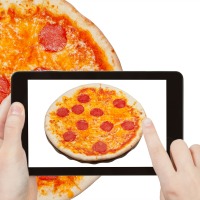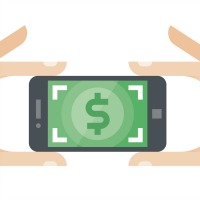 The rise of mobile devices led many to advocate for a mobile first design paradigm, or now even for mobile only era of design and development, but desktops and laptops are still around and are not dying any time soon. The tech world is now beginning to re-examine and even question the validity of mobile first. We’ve previously discussed this evolution in thinking, and the proliferation of more screens and devices, and described a new concept of people first. The theory is that rather than designing for mobile, or any particular device, we should design experiences to follow users as they move across devices.
The rise of mobile devices led many to advocate for a mobile first design paradigm, or now even for mobile only era of design and development, but desktops and laptops are still around and are not dying any time soon. The tech world is now beginning to re-examine and even question the validity of mobile first. We’ve previously discussed this evolution in thinking, and the proliferation of more screens and devices, and described a new concept of people first. The theory is that rather than designing for mobile, or any particular device, we should design experiences to follow users as they move across devices.
The reality is that rather than being mobile only, people interact with a variety of devices depending on their needs and what they need to accomplish. These interactions can cross their personal devices, from their phone to their watch, television, and even their car, and also extend to public displays such as billboards and in-store signage. So designing and developing solutions not just for mobile, but rather based on the screen users are currently in front of, and based on how those users are interacting with that screen, will likely yield a better solution.
Today, consumers want screen flexibility based on task. While desktops and laptops haven’t gone extinct they aren’t particularly growing either. They do, however, serve a purpose in the work world for consuming and publishing content. Their larger screen gives users an easier way to write a blog post and share documents, for example. Hybrid laptop/tablet products are increasing in sales and still integral to people’s daily lives.
Tablets too have a specific purpose in work and leisure. Many people prefer them to use for entertainment, whether that is streaming content or making purchases. Their slightly larger design and portability make them better suited for that, which is why people spend about 43 minutes a day using them. They are also more likely to be used in certain professional capabilities like sales and are seeing an increase in workplace use.
Nowadays, the largest amount of time during the day is spent using a mobile device. Being a relatively smaller device, it’s easier for people to pick it up and check everything from their email to breaking news. With the growth of responsive design and apps, mobile is most people’s go-to throughout the day to complete quick tasks. And mobile usage will only continue to grow.
With people using at least three different screens a day (and not even considering the time spent watching TV), it seems more efficient to design not for a specific mobile device or even screen but to look at it as designing for a user’s specific need and how they will interact with it. Using context and other sensory data, you can determine the user’s engagement model and needs, and then determine the right information to displayed, on the right screen, in the right format, at the right time.
Need help with orchestrating the user experience across your applications and devices in order to design for a people-first strategy? Contact us.






